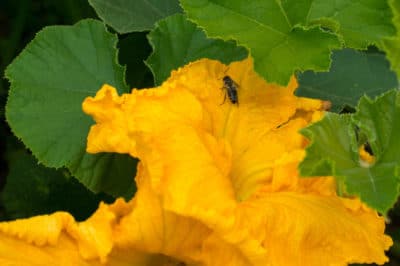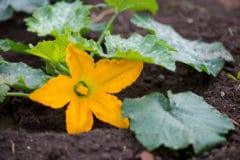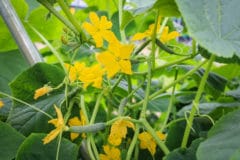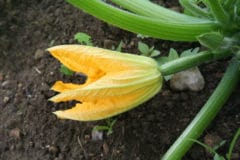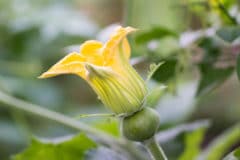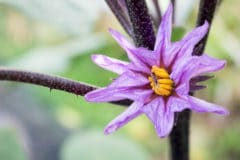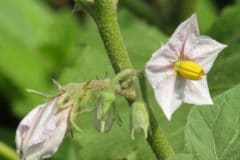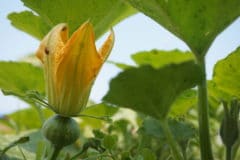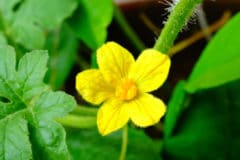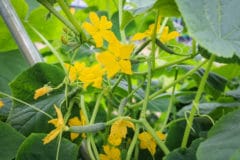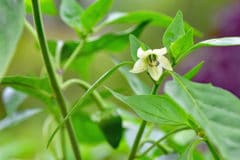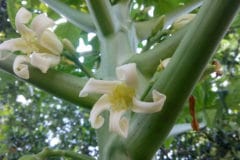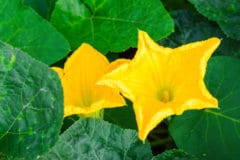Reasons To Hand Pollinate
The result of a declining bee population in some areas is poor or even no pollination of plants such as squash. Cold, rainy and extremely hot days can also reduce pollination activity temporarily. Even with the lack of bees, a gardener can guarantee pollination by learning and then applying the art of hand pollination.
Hand pollination is necessary for squash plants that are covered with row covers or grown indoors. To prevent adult squash vine borers from laying eggs on plants, some gardeners choose to use row covers or grow in greenhouses. Hand pollination is crucial in this situation.
Flower Identification
Squash plants contain both male and female flowers on each plant. Before hand pollinating can occur, a gardener must be able to identify the male and female squash plant flowers.
Male Flowers
About six weeks after germination the first male flowers appear on the squash plant. Here are some visible characteristics to identify on the male flower:
- Yellow or white petals
- Long stem with no fruit below flower petals
- Pollen covered anther (looks like a shortened cotton swab) in center of flowers
Female Flowers
Female flowers of squash plants appear after the male flowers develop. The color of the female flowers is always the same as the male flowers of that plant. Here are other visible characteristics that aid in the identification of the female flower:
- Yellow or white petals
- Small fruit below flower petals.
- Golden-orange sticky stigma (part of pistil) in center of flowers.
Timing of Pollination
Female flowers do not appear on the squash plant until pollen is present in the male flowers. When the female flowers appear, it is time to hand pollinate.
Early morning is the time of the day squash flowers open; therefore, this is when hand pollination should be performed. Humidity is usually higher in the early morning. The pollen therefore sticks to the female’s stigma better.
Technique of Pollination
To accomplish hand pollination, first, carefully cut the stem of a male flower from the vine. Next, gently tear off the flower petals, keeping the pollen-covered anther connected to the stem. The final step is to thoroughly cover the female stigma with the pollen from the male anther. Each male flower has enough pollen to generously cover about five female stigmas.
Hand pollination can also be accomplished with a small, soft paintbrush. Simply, transfer the pollen from the male anther to the female stigma. With either method, fertilization occurs. The ovary of the female flower begins to swell and develops a fruit. Repeat this over and over again to reap a bountiful harvest.
